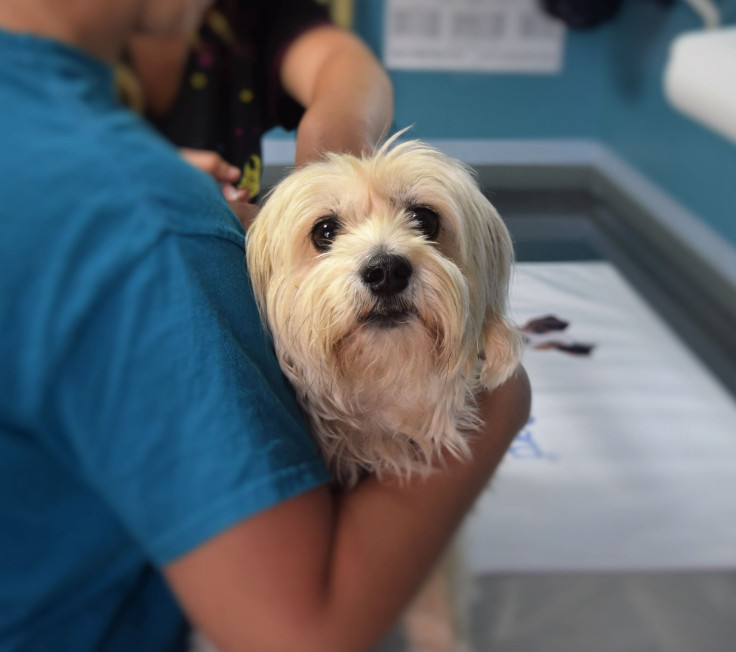Pathogen-testing machine sets the standard for disease detection in veterinary centres

Lexagene, one of the US’ leading up-and-coming biotech companies, has recently announced that it has unveiled the company’s low-cost LX2TM Beta Prototype, which aims to provide veterinary clinics an on-site instrument for detecting significant and even deadly pathogens that could affect patient health.
LexaGene’s (OTCQB:LXXGF) (TSX.V:LXG) PCR-based (polymerase chain reaction) pathogen-detection technology is set to drastically change and improve operations of veterinary centres. The instrument was designed to be placed inside the clinic for insight at the point of sample collection. The device can screen samples for multiple targets at once and return results in about one hour.
Its technology is said to be able to get results as fast as an hour. This is a vast improvement compared to old methods which rely on samples needing to be shipped to laboratories, resulting in days of waiting.
The LX2 System, unlike existing technologies, is a low cost, small-footprint instrument perfectly suited for veterinary clinics. It allows animal clinics to offer better patient care since it takes less than a minute to initiate sample processing. And with the rapid return time for diagnostic results, veterinarians can determine the right course of treatment while the patient is still in the clinic.
This breakthrough technology is set to provide veterinary practitioners with the precise information they need to better treat their patients for common infections like urinary tract infections and respiratory ailments, conditions which are often wrongly-prescribed antibiotics.
“The veterinarians at our hospital are happy that LexaGene has listened to our suggestions and are specifically building an instrument to meet our needs in the Emergency/Critical Care and Internal Medicine departments," Dr Samuel Stewart, DVM, DACVECC, Emergency and Critical Care veterinarian at Ethos Discovery, said in a recent press release.
He added, "We currently lack reliable point-of-care diagnostics for infectious diseases and need an instrument that is small enough to fit into our cramped hospital, yet has the screening potential to look for many diseases at once,”
Key features
The LX2 System can accept two distinct reagent panels for syndromic-based testing, where each panel can detect 28 targets (or up to 56 targets in total) at once, a far cry from current methods of testing. The instrument will also be capable of processing two samples at a time, which is almost unheard of in most clinics.
The machine measures 16” wide x 20” tall x 22” deep. LX2 also incorporates a one-time disposable cartridge per test that allows the company to exploit a razor blade business model.
LexaGene’s CEO, Dr Jack Regan, has said in a recent press release: “Our veterinary partners are thrilled about the increased screening capability of the LX2 and its smaller footprint. Incorporating this technology into a veterinary practice will provide better patient outcomes since the technology also looks for antimicrobial resistance, which will allow clinicians to make more informed decisions on prescribing the appropriate antibiotic. Furthermore, by bringing the testing in-house, practices will tap into a valuable revenue stream that will drive adoption rates.”
Dr Regan was a lead scientist in developing a predecessor instrument designed for bio-warfare surveillance that was adopted by the Department of Homeland Security for the BioWatch Program and a second R&D instrument that was designed for detecting respiratory pathogens from nasal swab samples.
His expertise gives leverage to LexaGene and its position as an emerging and disruptive biotech company that develops a fully automated pathogen detection platform that can be used on site of sample collection. The technology is regarded as well for its ease-of-use, sensitivity and breadth of pathogen detection.
Aside from veterinary clinics, the company’s technology is applicable to a number of significant markets. Included in the applications are food safety, water quality testing, aquaculture testing and pandemic prevention among others.
The rise in food pathogen testing
According to the Herald Telegraph, the global food safety testing market reached a market cap of more than US$11 million (AU$15.6 million) in 2016 and is expected to rise annually by as much as 7.2 percent every year until 2023.
This is because the food supply chain is often under constant threat and scrutiny globally, with a growing demand for effective testing to ensure food safety amongst consumers. Food safety has recently been a top priority for food producers because of the rising number of cases of food-borne illnesses due to contaminated food products. The number of food recalls each year is also on the rise, with an estimated associated impact of US$30 million (AU$42.6 million) per recall in lost product and brand damage for companies.
IBT Australia does not endorse any product or practice mentioned here. The article is based on press releases sent for consideration.




















